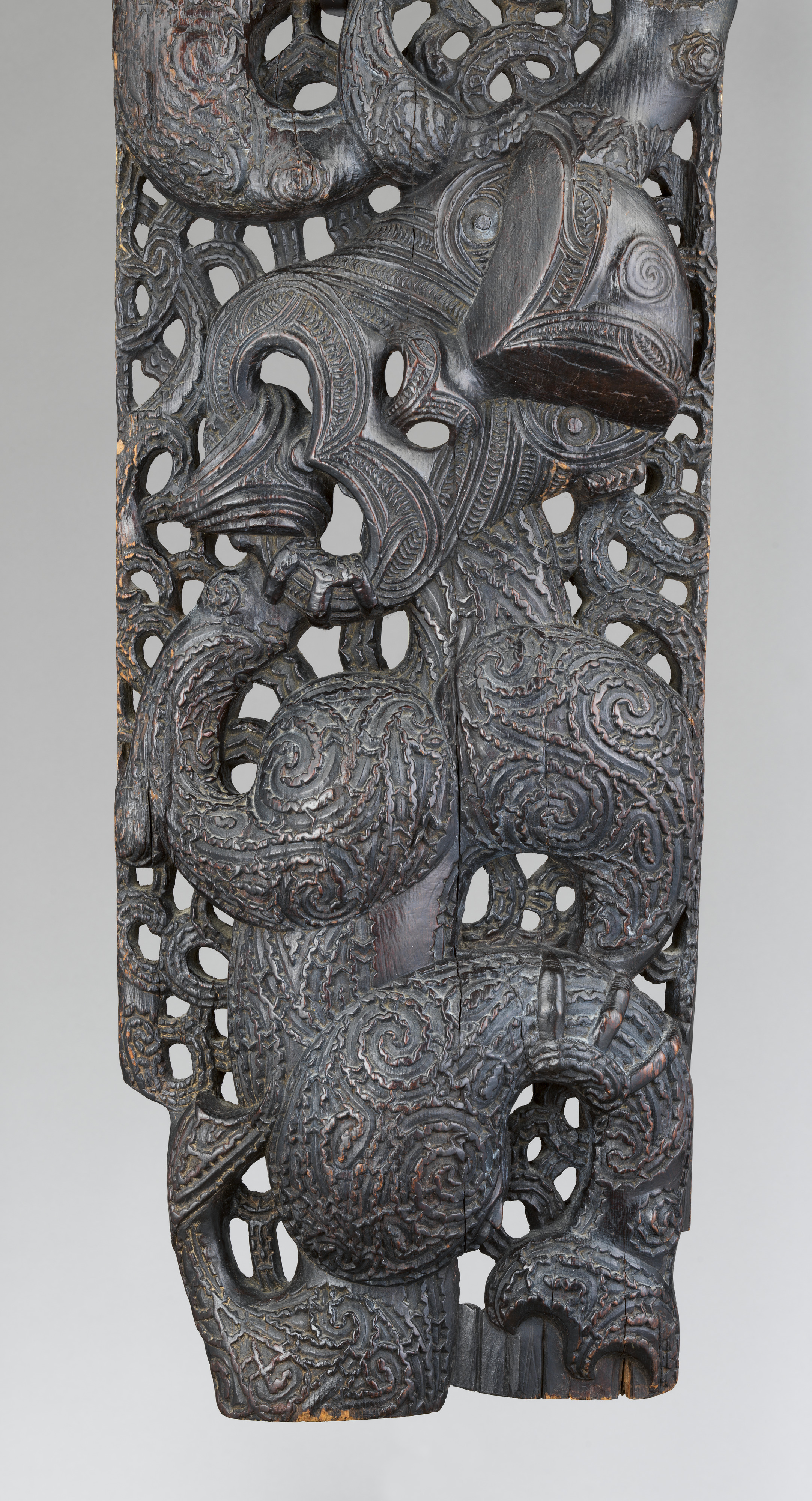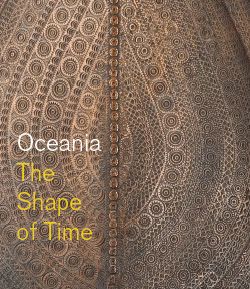Epa (carved panel for a storehouse)
Formerly integrated into a chiefly pātaka (storehouse), this upright Māori carved panel for a storehouse foregrounds the vitality of the community through the intertwining of male and female form during sexual union, which is common for the genre. This rare Māori carving is of superlative quality and features iconography that relates closely to procreation, abundance, and fertility. Bold and innovative, the sculptor has masterfully carved this piece to create a visual rhythm of sinuous, fluid movement. The limbs are alive, dynamic and alert. The hands of the male figure reach up and under the mouth to grip onto the bottom lip and the female hand reaches up under her leg to grip onto her thigh. The carver exhibits extraordinary virtuosity in portraying the dynamism of the pair: heads tilt to one side, nostrils flare, the figure’s eyes fix on the viewer in an actively defiant gesture with tongue protruding (pūkana)—a direct challenge to deter anyone from approaching the storehouse. The master carver plays innovatively with the planar dimension of the piece: limbs flow rhythmically while sculptural volume in the shoulders, buttocks, and thighs indicate nimbleness and agility.
The ‘extra’-ordinary aspect of this pair of ancestral figures is emphasized by their expressive and supple bodies, the slender tapering of their fingers and bird-like webbed feet, which affirm their direct descent from the earliest bird-like primordial ancestors. Their distinctive incised facial and bodily tattoo markings (tā moko) indicate their high status and chiefly lineage. Rising up in the vertical plane, the Māori master carver responsible for the creation of the carved panel demonstrates his ingenuity by skillfully piercing the entire panel with spectacularly dynamic openwork, creating a lattice panel that highlights the interaction of light and dark and is a visual reference to the piercing of the sacred night (te po) with the first light of creation (te ao marama) when the creative forces of the universe were at their most dynamic. This powerful creativity is also referenced in the pairing of male and female figures whose cosmological union was celebrated. The rich black patina of the wood is the result of steeping the carving in paru (a special-grade black mud steeped in iron) which has contributed to its preservation. Shell insets, dropped into the eyes of each figure, provided scintillating flash points in contrast to the dark background of each sculptural piece, challenging those who dared approach the chiefly ceremonial spaces which were the sacred domain of chiefs and the focal point of 18th-century Māori tribal communities.
This image cannot be enlarged, viewed at full screen, or downloaded.
This artwork is meant to be viewed from right to left. Scroll left to view more.





